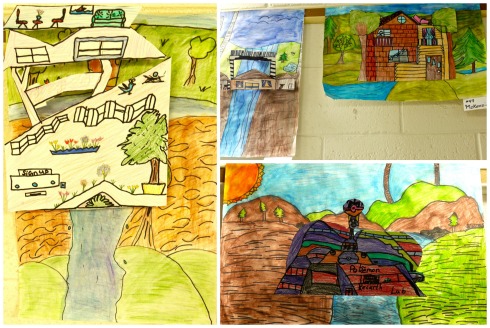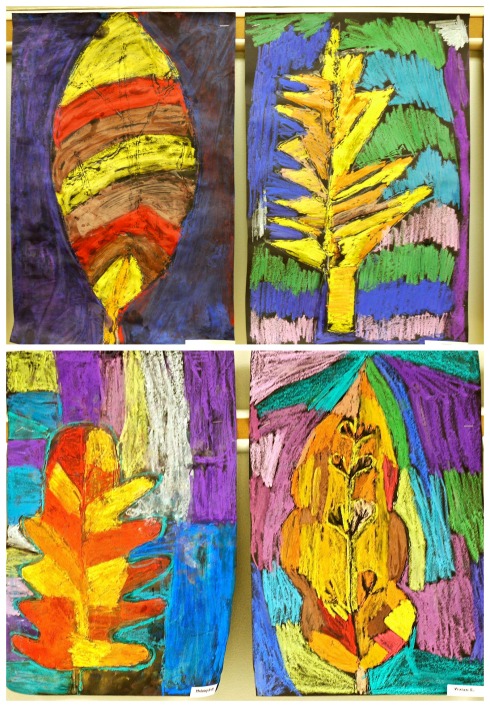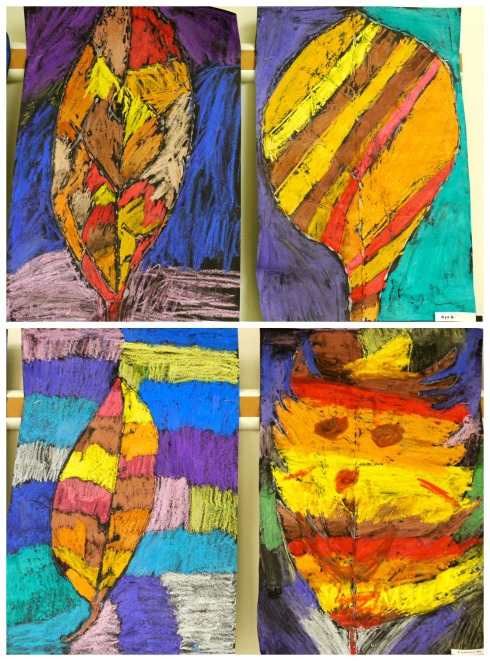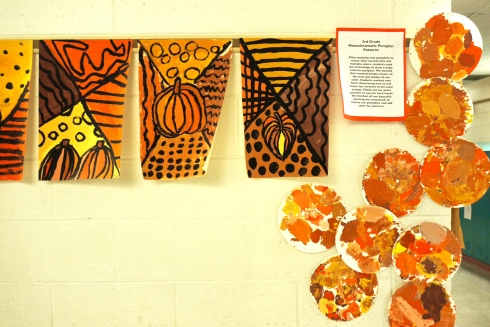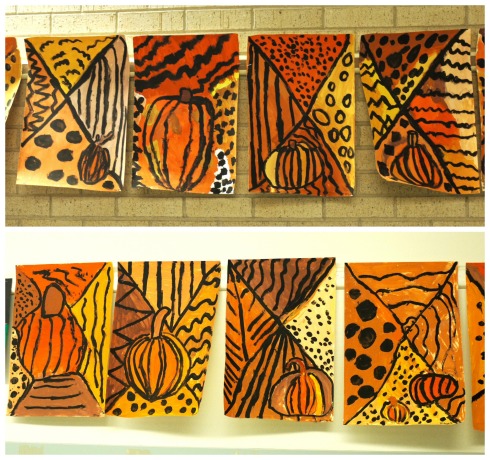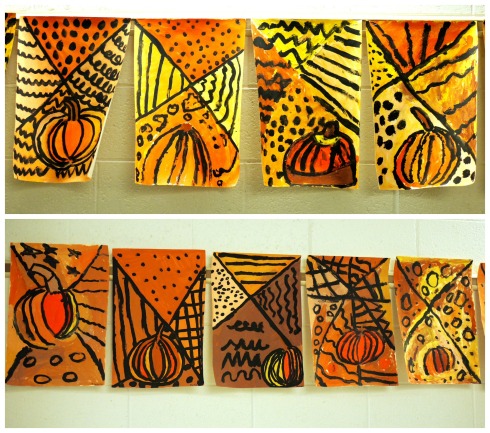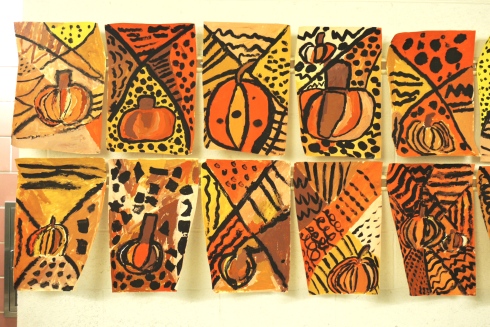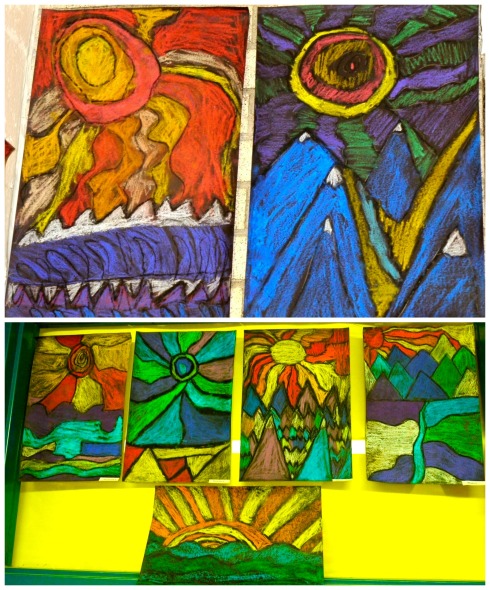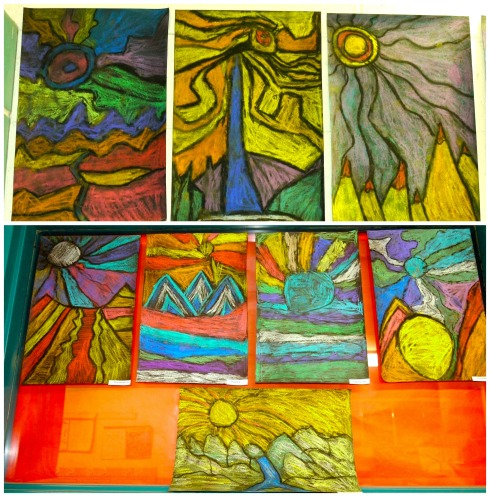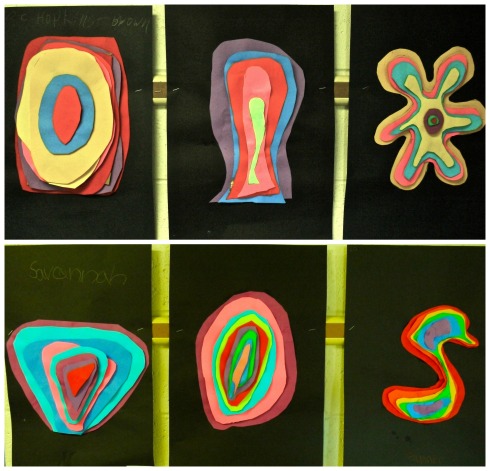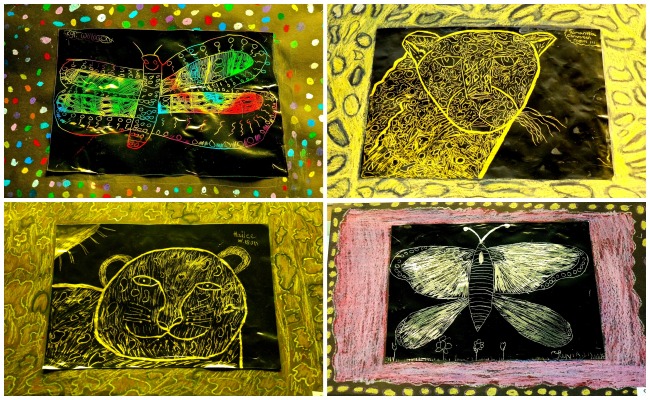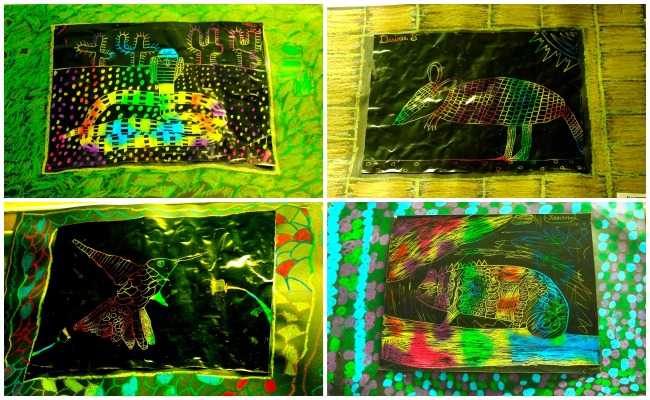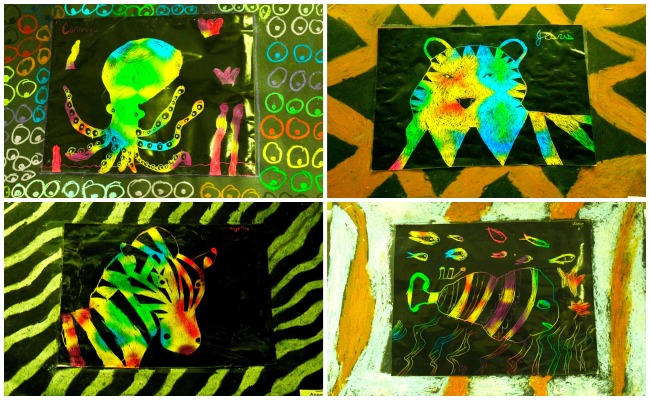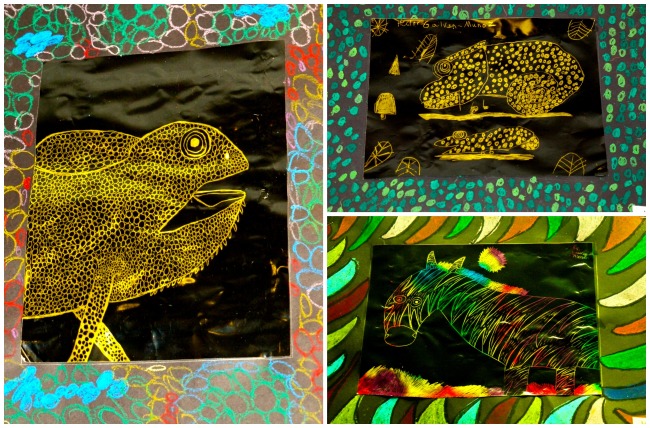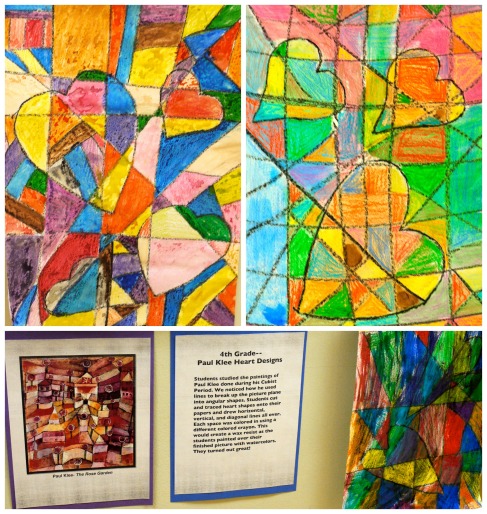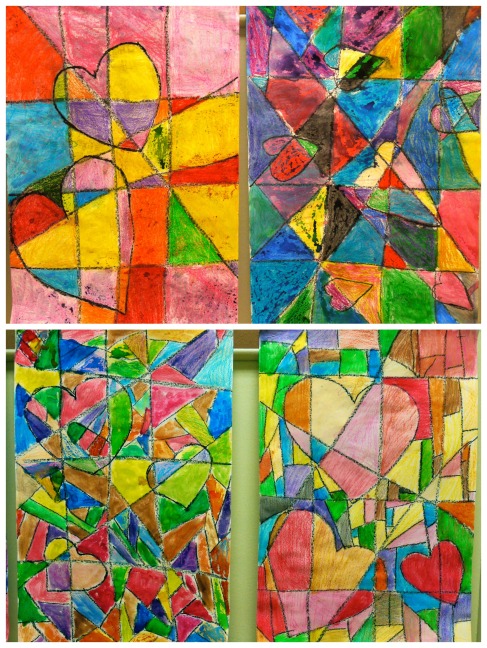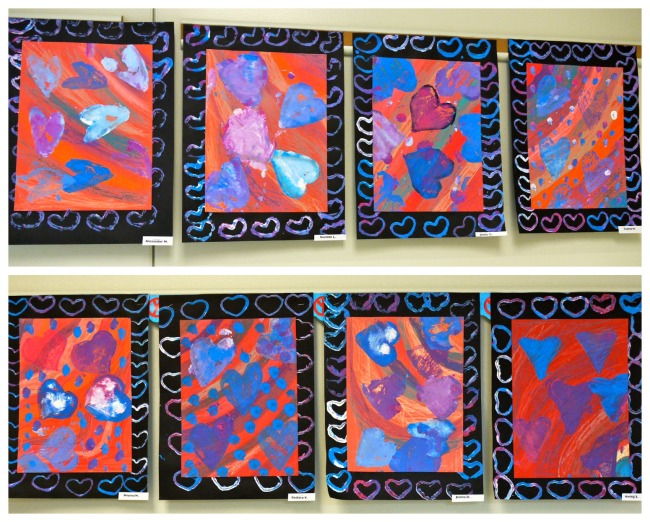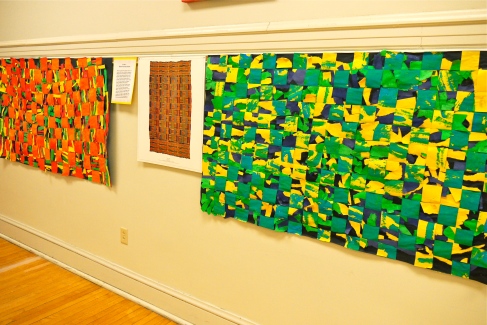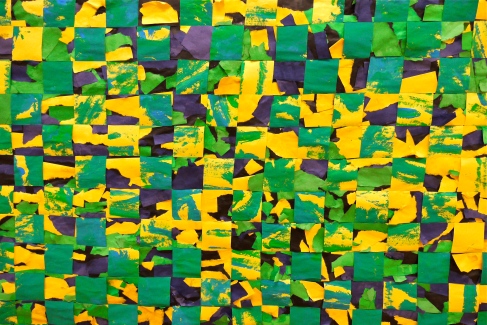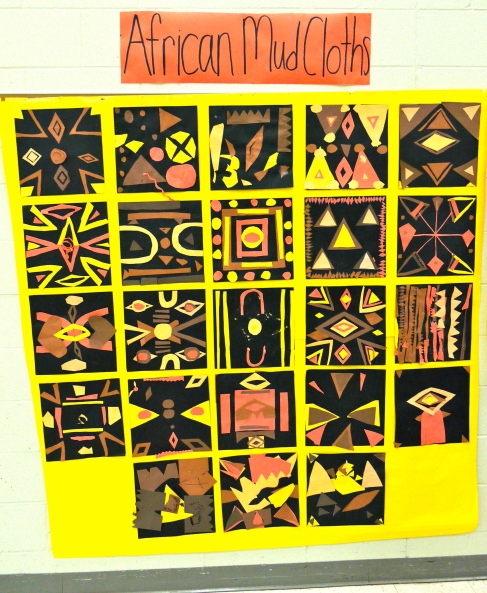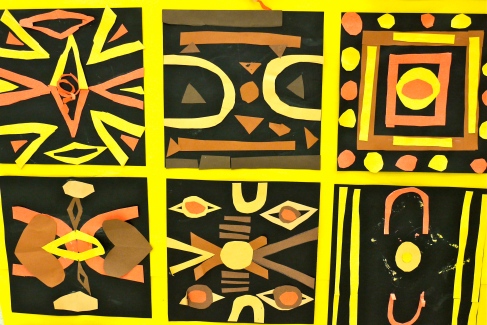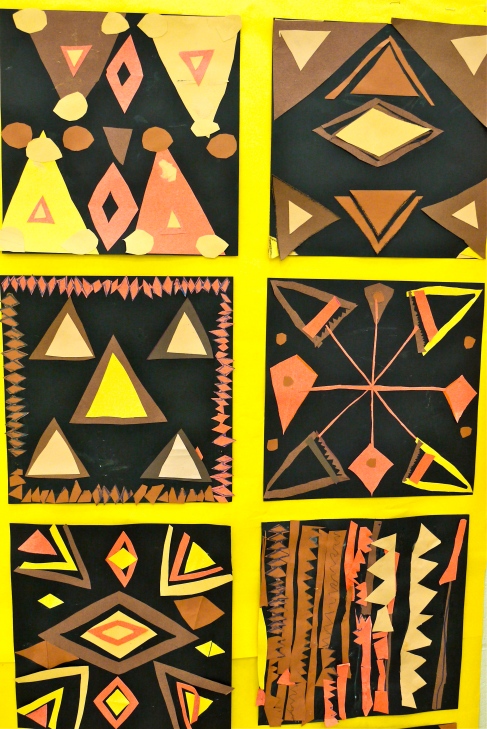
Hello again! Life has gotten busy with a full school schedule and my now one year-old son. I am excited to share some of the great creations my students have been working on. Thanks for reading!

The Central Idea for my 4th grader’s Where We Are in Place and Time IB unit is “Civilizations are dependent upon the geography of a region”. The unit explores how individuals contribute to the culture and growth of a region and explores the physical features of that region. We focused on the architect Frank Lloyd Wright as our inspiration.
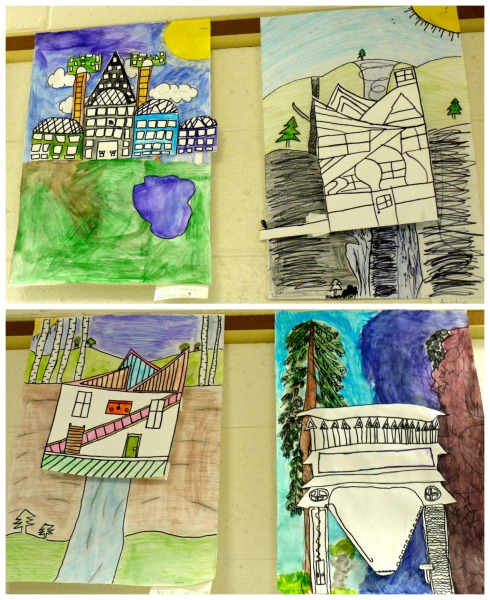
Students first studied the varied landscapes of Wisconsin, from the densely forested Northwoods to the sandstone bluffs found near the Dells, to the sand dunes and waterfalls found in our State Parks. We talked about how Frank Lloyd Wright designed his buildings to fit within a landscape, allowing nature to play a star role in his designs.
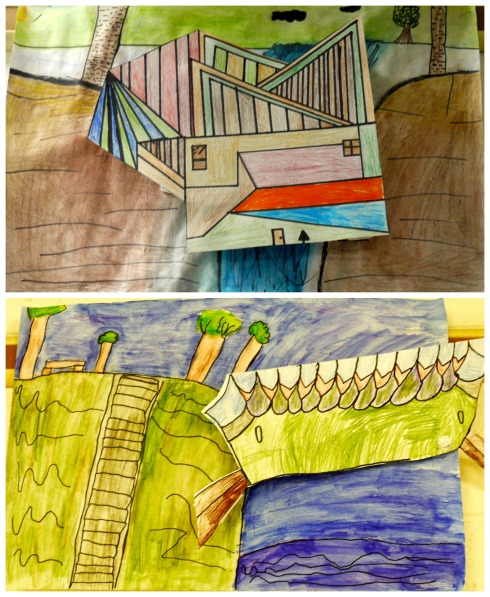
Students then illustrated their backgrounds as inspired by their knowledge of Wisconsin landscapes. They made sure to add many details to make their scenes interesting as well as to use previous techniques learned to create the illusion of space.

After their backgrounds were complete, we studied some of the local buildings designed by Wright. We are lucky to have Wingspread and the S.C. Johnson building in our very own backyard! We also looked at other Wright architecture found in our state, from the Monona Terrace to his Taliesin studio in Spring Green. We discussed how his style of architecture uses many geometric shapes and angles. They loved his unique style and were eager to design their own inspired houses or buildings that fit into their landscapes.

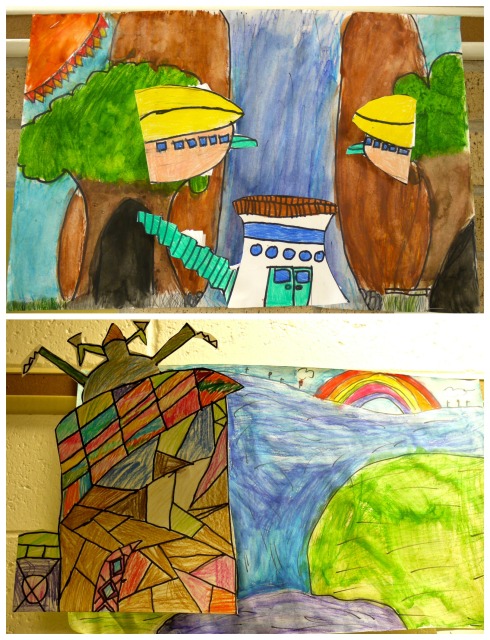
After their buildings were complete, we made pop-ups to attach to the back of them so that they would pop out from the backgrounds. The added dimension really made their buildings stand out. I can’t wait to see what my 4th graders this year come up with!
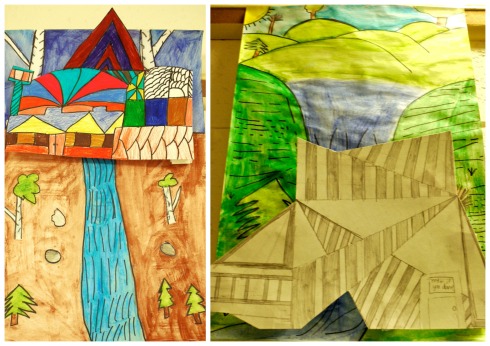
We found quite a bit of interesting info in the book Frank Lloyd Wright for Kids: His Life and Ideas. This computer animated video of Fallingwater and its construction also fascinated the kids.
